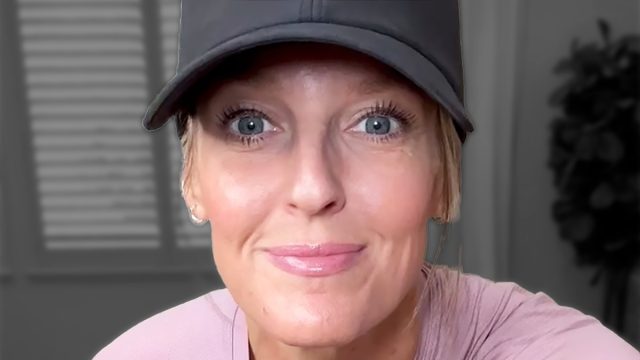Fitness Expert Says Fit Women in Their 40s Have These 6 Things in Common

Are you over 40 and struggling to lose weight? Julie Clouse is a social media influencer and fitness and macros expert who tries to "inspire others to be the best version of themselves." In a new social media post she reveals a few of the habits all the fittest women she knows share. "Not to be dramatic but…There is no secret. The fittest women I know in their 40s have these 6 things in common. They ALL DO THIS!!!" she writes.
Strength Training
The first habit they share? "They prioritize strength training," she says. "Fittest women in their 40s consistently lift heavy weights, focusing on progressive overload to build muscle and maintain strength."
Healthy Diet
The next thing they have in common is a healthy diet. "They eat for their goals," she explains. "They track their macros, prioritize protein (about 1g per pound of body weight), and fuel their bodies with balanced nutrition instead of following fad diets."
Daily Activity
Another thing they do? "They stay active daily," she says. "They prioritize NEAT (non-exercise activity thermogenesis) by walking, staying active, and avoiding a sedentary lifestyle, aiming for at least 8-10k steps a day."
Stress Management
They also understand the importance of mental health and self-care. "They manage stress and recovery," she writes. "They take rest days, prioritize sleep, and understand that recovery is just as important as workouts. Many practice mindfulness or stress management techniques."
Patience and Discipline
The fifth habit they share? "They embrace patience and discipline," she says. "They know results take time and stay disciplined even when progress feels slow."
Consistency
And what is the most significant piece that ties this all together? "They are CONSISTENT," she says. "No matter how busy life gets, they show up for themselves day after day. They don't rely on motivation; they rely on habits they've built over time."
Bonus Tips: Just Start
She also offers some bonus tips. "Just start," she suggests. "Instead of getting overwhelmed about 6 things you feel like you need to change. Pick 1 start there."
Don't Focus on Perfection
"You do NOT have to be perfect. If you've been here long enough, I share how to incorporate a sustainable life style with your busy lives and families," she adds.
Stay the Trail
Next, just keep going. "Yes, it will be hard at first. Yes, there will be days you're wondering if you're making progress. Stay the trail. This is for the long term. This is for longevity with your kids and spouses. This is for YOU!" she says.
Take One Hour for Yourself
She also stresses the importance of taking care of yourself and not feeling guilty for it. "Self care is not selfish. You deserve 1 hour to yourself," she says.
Focus on Losing One Pound a Week
Finally, aim for one pound a week and celebrate it. "Losing 1lb a week is a BIG DEAL!! Imagine if you gained a lb a week. Give yourself grace. The slow way is the fast way for the long term," she says. And if you enjoyed this article, take advantage of these 15 Quick Ways to Lose Body Fat Percentage in a Week.




